
Gustav Diessl was an Austrian artist, and film and stage actor.

Tragic Return is a 1952 Italian melodrama film directed by Pier Luigi Faraldo and starring Doris Duranti, Marcello Mastroianni and Franca Marzi. It was shot at the Pisorno Studios in Tirrenia. The film's sets were designed by the art director Giorgio Ansoldi. It earned 92 million lire at the Italian box office.
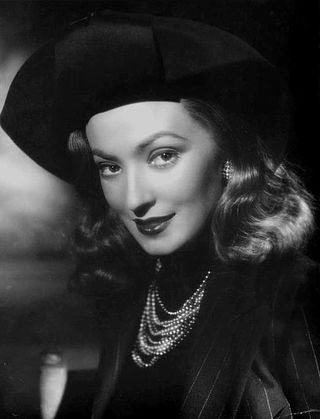
Doris Duranti was an Italian film actress. She appeared in 43 films between 1935 and 1975. She had a years-long affair with Alessandro Pavolini, a Fascist politician who in 1945 was executed by Italian partisans; his body was then hung with that of Benito Mussolini.

Tomorrow Is Another Day is a 1951 Italian melodrama film directed by Léonide Moguy and starring Pier Angeli, Aldo Silvani and Anna Maria Ferrero. It was produced as a follow-up to the hit film Tomorrow Is Too Late also directed by Moguy and starring Angeli in her screen debut. Afterwards Angeli moved to Hollywood as a contract star of MGM.
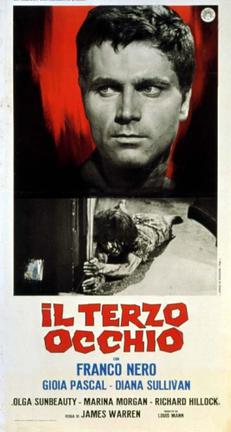
The Third Eye is a 1966 Italian horror film. It was directed by Mino Guerrini and stars Franco Nero, Gioia Pascal and Erika Blanc. A young count, who lives with his domineering, jealous mother, begins on a downward spiral into madness after his fiancée dies in a car accident. This was one of Franco Nero's earliest films, before he achieved stardom in the spaghetti western genre. Erika Blanc plays a dual role in the film, portraying both the Count's dead fiancée Laura, as well as Laura's twin sister Daniela.
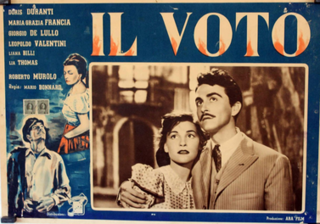
The Vow is a 1950 Italian melodrama film directed by Mario Bonnard and starring Doris Duranti, Giorgio De Lullo and Maria Grazia Francia. It is based on a play of the same title by Salvatore Di Giacomo. Future star Sophia Loren played a small, uncredited role. It was shot at the Scalera Studios in Rome. The film's sets were designed by the art director Piero Filippone.

Follow Your Heart is a 1996 Italian romantic drama film written and directed by Cristina Comencini. It is based on the novel with the same name by Susanna Tamaro.

Under the Southern Cross is a 1938 Italian drama film directed by Guido Brignone and starring Antonio Centa, Doris Duranti and Enrico Glori. The film is set in Italian-occupied Abyssinia following the recent Italian victory there. It was one of a sequence of eight films set in Italy's African Empire during the Fascist era that were released between 1936 and 1939. The film is a propaganda piece designed to support Fascist policy on empire and concerns about inter-racial romances.
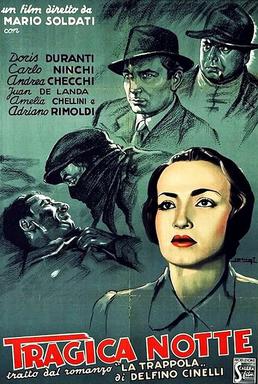
Tragic Night is a 1942 Italian drama film directed by Mario Soldati and starring Doris Duranti, Carlo Ninchi and Andrea Checchi. It is based on a 1928 novel La trappola by Delfino Cinelli. After being released from prison, a poacher seeks revenge on the gamekeeper who put him there. It was made at the Scalera Studios in Rome. It belongs to the movies of the calligrafismo style.

The Peddler and the Lady is a 1943 Italian comedy film directed by Mario Bonnard and starring Aldo Fabrizi, Caterina Boratto and Anna Magnani.
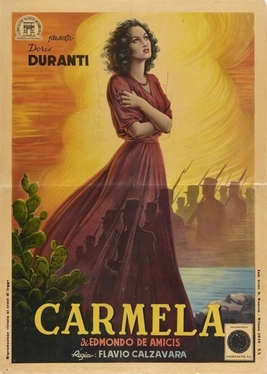
Carmela is a 1942 Italian drama film directed by Flavio Calzavara, starring Doris Duranti and Pál Jávor. It is set on a small island in the Strait of Sicily in 1893, and tells the story of a young woman who is seduced by a soldier who promises to marry her, only to be abandoned soon after. When a new soldier is stationed on the island she tries to convince him to make the first soldier return. The film is based on Edmondo De Amicis' 1869 short story "Vita Militare".

Diamonds is a 1939 Italian "white-telephones" comedy film directed by Corrado D'Errico and starring Doris Duranti, Lamberto Picasso and Laura Nucci.

Francis the Smuggler is a 1953 Italian drama film directed by Gianfranco Parolini and starring Roberto Mauri, Doris Duranti and Vira Silenti.

The King's Prisoner is a 1954 Italian historical adventure film directred by Giorgio Venturini and starring Pierre Cressoy, Andrée Debar and Armando Francioli. It is based on the novel The Man in the Iron Mask by Alexandre Dumas.

The Hero of Venice is a 1941 Italian historical adventure film directed by Carlo Campogalliani and starring Gustav Diessl, Paola Barbara, Rossano Brazzi and Valentina Cortese.

Mist on the Sea is a 1944 Italian drama film directed by Marcello Pagliero and Hans Hinrich and starring Viveca Lindfors, Gustav Diessl and Umberto Spadaro. The film's sets were designed by the art director Salvo D'Angelo.

The Woman of Sin is a 1942 Italian drama film directed by Harry Hasso and starring Viveca Lindfors, Otello Toso and Gustav Diessl. It was one of two films Swedish actress Lindfors made in wartime Italy. It was shot at the Cinecittà Studios in Rome. The film's sets were designed by the art director Guido Fiorini.
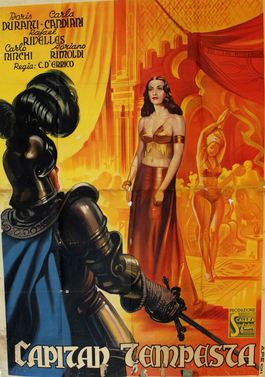
Captain Tempest is a 1942 Italian-Spanish historical adventure film directed by Corrado D'Errico and starring Doris Duranti, Dina Sassoli and Carlo Ninchi. It is an adaptation of the 1905 novel of the same title by Emilio Salgari set during the Ottoman–Venetian War. It was shot at the Scalera Studios in Rome. The film's sets were designed by the art directors Gustav Abel and Amleto Bonetti. It was followed by a sequel The Lion of Damascus the same year.

The Lion of Damascus is a 1942 Italian-Spanish historical adventure film directed by Corrado D'Errico and Enrico Guazzoni and starring Carla Candiani, Doris Duranti and Carlo Ninchi. It is based on the 1910 novel of the same title by Emilio Salgari and is a sequel to the film Captain Tempest released earlier the same year. It was shot at the Scalera Studios in Rome. The film's sets were designed by the art directors Gustav Abel and Amleto Bonetti. The film was begun under the direction of D'Errico but completed by Guazzoni following his death. A separate Spanish-language version El león de Damasco was also produced.

Morning Star is a 1950 Brazilian drama film directed by Osvaldo de Oliveira and starring Doris Duranti, Paulo Gracindo and Dulce Nunes. The film's sets were designed by the art director Lazlo Meitner. It was one of two postwar films Italian star Duranti made in South America alongside the Argentine Alguien se acerca in 1948. Duranti did not appear on screen in her native Italy for several years due to her controversial former relationship with Fascist politician Alessandro Pavolini.




















